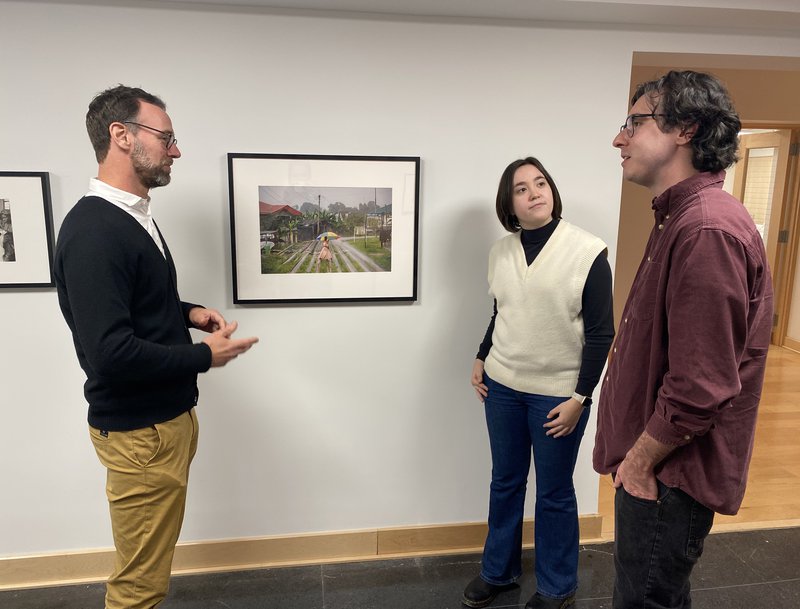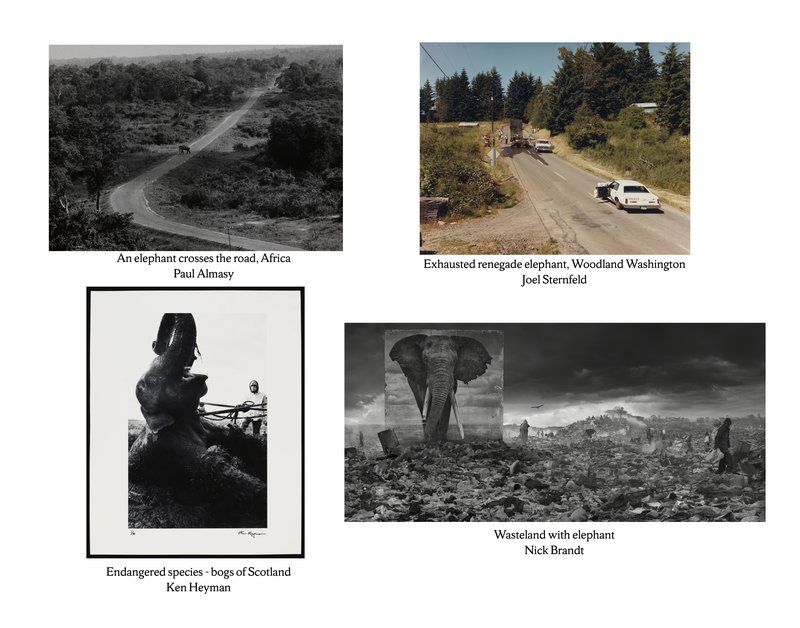Other Ways of Seeing: Understanding Ecology and Climate Through Art
A team of Syracuse University faculty, students and staff create learning materials for educators and students, using the SU Art Museum’s vast collection of objects and artworks.
Helping students of all ages understand and respond to the implications of the climate crisis, and to think ecologically, is complicated and requires an innovative and collaborative approach. That’s why Mike Goode, professor of English in the College of Arts and Sciences (A&S), wanted to focus on ways the humanities could help people to learn about ecology and climate when he became the William P. Tolley Distinguished Teaching Professor in the Humanities – a role designed to support enhancement of the pedagogical experience and to boost effectiveness in the classroom.
Goode teamed up with staff at the SU Art Museum and students across campus to explore the ways in which objects and artworks in the museum’s collection could be utilized as teaching resources. Over the past year, the transdisciplinary team has conducted countless hours of research to develop a collection of electronic museums (e-museums), called the Art, Ecology and Climate Project. The following section of questions and answers provide details and information about the curators, the extensive research that went into this effort and how teachers can utilize these resources.
What is an e-museum?
An e-museum is a digital collection of objects and artworks published online. For this project, Goode and his team members created 15 topical e-museums related to ecology and climate, featuring nearly 1,000 objects from the SU Art Museum’s collections. Each e-museum is published on the SU Art Museum’s website and includes an introduction to each topic, a gallery of objects and artworks from the museum tied to that subject, and teaching guides.
Who was involved in the project?
Mike Goode, Tolley Professor in the Humanities and professor of English in A&S, and Kate Holohan, curator of education and academic outreach at the SU Art Museum, conceived of, developed and carried out the project. A student team consisting of Jeffrey Adams, a Ph.D. candidate in English, Abigail Greenfield ’25, a history and political philosophy major in A&S | Maxwell and art history minor in A&S, and Jeanelle Cho ’24, an architecture major in the School of Architecture and art history minor in A&S, researched artworks for the e-museums and co-wrote the teaching guides.

Mike Goode (left) conversing with A&S | Maxwell student Abigail Greenfield (center) and Jeffrey Adams (right), a Ph.D. candidate in English, about OKRIKA, NIGERIA | 2004 by Ed Kashi '79, an artwork featured in one of the e-museums.
How were themes and works selected for the museums?
The curatorial team combed through around 30,000 of the art museum’s 45,000 objects and tagged artworks according to subject and theme. Works were categorized and grouped into 15 different e-museums, 12 of which have already been published: Animals and Animality; Atmospheric; Bewilderment; Entanglement; Environmental Justice; Extraction; Food Systems; Materials; Pollution & Contamination; The Anthropocene; Wilderness & Wildness; and Plants & Planting. The team aims to publish the three remaining museums, Environmentalisms; Power and Energy; and Water Use, in April.
Who are these materials for?
The e-museums are primarily targeted toward educators at the university level, but can also be adapted at the high school and middle school levels. Teachers can use the learning guides to address large scale questions about a grouping of artworks or focus on one work and explore its ecological and cultural context. The museums also put different works in dialogue so students can observe the ways in which artists are tackling subjects differently. Below is an example featuring a grouping of images of elephants from the 'Wilderness and Wildness' teaching guide. Together, these images raise questions about animal captivity and the relationship between humans and animals.

The teaching guides include a variety of learning materials and prompts, including writing assignments, tips and questions on how to analyze a work of art, ideas on how to curate your own set of objects, and a list of books related to the different e-museum topics.
How long will the e-museums be available?
They will remain on the SU Art Museum’s website for the foreseeable future. As themes and trends change over time, the team hopes the museums and teaching guides will evolve and persist, offering an educational resource for years to come.
Is it possible to view any of the e-museum objects in person?
The e-museum project was launched this semester alongside the physical exhibition, Assembly: Syracuse University Voices on Art and Ecology. Assembly , which was curated by Susannah Sayler, associate professor of art photography in the College of Visual and Performing Arts (VPA), Edward Morris, instructor in VPA, Melissa Yuen, museum interim chief curator, and Mike Goode, puts objects from the art museum’s permanent collection in dialogue with contemporary artwork by University faculty and several notable alumni artists to highlight environmental issues and foster ecological understanding. Several works from the e-museums are featured in Assembly, which will be on view at the SU Art Museum through May 12, 2024.
Featured
Mike Goode William P. Tolley Distinguished Teaching Professor in the Humanities
